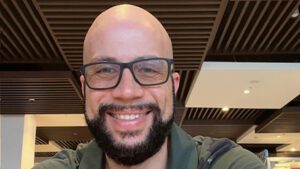The artificial turf industry stands at a pivotal juncture where performance demands meet environmental responsibility. AstroTurf, the company that pioneered synthetic sports surfaces six decades ago, continues to shape the future of athletic fields through groundbreaking technologies that prioritise both player welfare and ecological sustainability.
From elite football pitches across Europe to Olympic field hockey venues, the latest developments demonstrate how scientific research and innovative materials are transforming the landscape of modern sport.
Revolutionary Sustainability Through Sugar Cane Technology
The most striking advancement in synthetic turf technology emerges from an unlikely source: sugar cane. AstroTurf has developed the world’s first carbon-neutral hockey turf, specifically engineered for Olympic competition. The Poligras Paris GT Zero system, which featured prominently at the Paris 2024 Olympics, incorporates 80 per cent bio-based materials derived from sustainably farmed sugar cane.
This remarkable achievement addresses one of sport’s most pressing environmental challenges. Traditional synthetic turf relies heavily on petroleum-based plastics, contributing to carbon emissions throughout the manufacturing process. By utilising a by-product of sugar cane processing from Brazil, the new technology actively captures CO2 from the atmosphere during the plant’s growth cycle. The third pressing of sugar cane, no longer useful for sugar production, provides the raw material for organic polyethylene that forms the foundation of this revolutionary surface.
The environmental impact proves substantial. Each standard hockey pitch using this technology saves approximately 73 tonnes of CO2 compared to conventional synthetic turf. The carbon footprint reduction has been independently certified by Berlin-based DAkkS-accredited consulting company GUTcert, validating the surface as genuinely climate-neutral.
Beyond carbon neutrality, the innovation extends to water conservation. The proprietary Turf Glide technology reduces friction between the ball and surface, allowing the turf to meet International Hockey Federation (FIH) standards for dry play. This advancement particularly benefits regions facing water scarcity, where maintaining traditional wet hockey surfaces poses significant challenges.
Biomechanical Research Drives Player Safety
Player safety remains paramount in synthetic turf development, with AstroTurf investing millions in research partnerships that yield measurable improvements in injury prevention. The collaboration with the University of Tennessee’s Center for Athletic Field Safety represents the industry’s most comprehensive approach to understanding how surface characteristics affect athlete biomechanics.
The centrepiece of AstroTurf’s safety innovation lies in its patented RootZone technology. This system employs crimped nylon fibres that create a three-dimensional matrix beneath the playing surface, effectively encapsulating the infill material. Independent research from Michigan State University identified this design as producing the safest biomechanical characteristics among synthetic turf systems tested.
The science behind injury prevention on artificial surfaces proves complex, involving multiple interconnected factors. Whilst surface consistency matters significantly, the research acknowledges that player conditioning, footwear selection, weather conditions, and individual biomechanics all contribute to injury patterns. The RootZone technology addresses the surface component by maintaining uniform shock absorption and energy restitution across the entire pitch, reducing the variability that can lead to unexpected movements and subsequent injuries.
Infill migration, a persistent challenge in synthetic turf systems, receives particular attention in the latest designs. During intensive play, traditional surfaces experience movement of infill material from high-traffic areas to less-used zones, creating inconsistent playing conditions. The RootZone matrix minimises this migration, ensuring that impact absorption remains consistent throughout the pitch’s lifespan.
Advanced Fibre Technology Enhances Performance
The evolution of synthetic turf fibres represents another frontier of innovation. AstroTurf’s Trionic Plus technology combines co-polymers of nylon and polyethylene, creating fibres that balance durability with the softer feel athletes prefer. This hybrid approach addresses longstanding concerns about surface abrasiveness whilst maintaining the structural integrity required for elite competition.
Several technological enhancements distinguish modern fibres from earlier generations. Sharkskin technology reduces skin friction, addressing concerns about surface abrasions common in sliding sports. The integration of Statblock antistatic additives proves particularly innovative, reducing static electricity by up to seventeen times compared to standard fibres. This reduction helps maintain infill stability whilst improving player comfort during dry conditions.
Temperature management presents another critical challenge, particularly for facilities in warmer climates. DualChill thermal shield technology provides a 42 per cent improvement in infrared reflectivity, slowing the rate at which fibres absorb heat. This advancement not only enhances player comfort but also extends fibre lifespan by reducing thermal degradation.
Antimicrobial protection through Sanitized technology addresses hygiene concerns increasingly important in shared athletic facilities. The treatment helps eliminate bacterial odours and prevents microbial buildup on fibre surfaces, contributing to healthier playing environments.
Comprehensive Systems Approach
The sophistication of modern synthetic turf extends beyond individual components to encompass complete system design. AstroTurf manufactures all elements in-house, from initial masterbatch formulation through final field installation, ensuring quality control at every stage. This vertical integration proves particularly important given recent concerns about chemical additives in synthetic materials.
Shock pad technology provides an additional layer of customisation. Modern elastomeric pads, placed beneath the turf surface, offer supplementary impact absorption tailored to specific sports requirements. Laboratory testing validates each pad configuration before field approval, ensuring consistent performance characteristics.
Global Impact on Elite Competition
The practical impact of these innovations manifests across elite sporting venues worldwide. AstroTurf surfaces have hosted twelve World Series, eleven Super Bowls, ten Olympics, and thirty-two NFL Pro Bowls throughout the company’s history. More recently, the focus has shifted towards football and field hockey applications, reflecting global sporting priorities.
The partnership with USA Field Hockey exemplifies long-term commitment to sport development. The installation of Olympic-specification surfaces at training facilities allows athletes to prepare on surfaces identical to those used in international competition. This consistency proves crucial for skill development and tactical preparation at elite levels.
European football clubs increasingly recognise the advantages of advanced synthetic surfaces for training facilities and youth academies. The ability to maintain consistent playing characteristics throughout the year, regardless of weather conditions, supports player development programmes requiring reliable training surfaces.
Tennis applications demonstrate the versatility of modern synthetic technology. Laykold court systems, part of the broader AstroTurf portfolio, provide surfaces suitable for everything from recreational play to professional competition. The integration of similar research principles across different sports yields surfaces optimised for specific movement patterns and ball interactions.
Manufacturing Excellence and Quality Assurance
Production facilities employ advanced testing equipment, including Berlin Athletes machines, QUV weathering testers, and accelerated wear simulators. This in-house testing capability allows rapid prototyping and validation of new materials before field deployment. The investment in laboratory infrastructure demonstrates a commitment to evidence-based product development rather than marketing-driven innovation.
Quality control extends beyond initial manufacturing to encompass installation procedures. Climate-controlled prefabrication facilities allow precise assembly of field sections before transport to installation sites. This approach minimises variables during field construction, ensuring consistent quality across different geographic locations and weather conditions.
Future Directions in Sustainable Sport Surfaces
Looking ahead, the trajectory of synthetic turf development points towards even greater integration of sustainable materials and advanced performance characteristics. Research continues into zero-waste manufacturing processes, with particular focus on end-of-life recycling solutions. The establishment of dedicated turf recycling facilities represents a crucial step towards circular economy principles in sports infrastructure.
Water conservation remains a priority, particularly for sports traditionally requiring irrigation. The success of dry-play hockey surfaces demonstrates potential for reimagining water usage across multiple sports. Future developments may extend these principles to football and other field sports, reducing environmental impact whilst maintaining performance standards.
Material science advances promise further improvements in player safety and surface longevity. Research into new polymer combinations and manufacturing techniques aims to create surfaces that more closely replicate the playing characteristics of natural grass whilst eliminating maintenance requirements and environmental drawbacks.
Industry Leadership Through Innovation
AstroTurf’s position as the only USDA BioPreferred sports turf manufacturer underscores leadership in sustainable manufacturing. The company’s early adoption of PFAS-free production processes and membership in the Green Sports Alliance reflect proactive environmental stewardship rather than reactive compliance.
The financial commitment to research and development distinguishes serious innovation from superficial improvements. Multi-million pound investments in university partnerships and testing facilities demonstrate a long-term vision for advancing sports surface technology. This approach contrasts with competitors focused primarily on short-term market gains.
Collaboration with international sporting federations ensures that innovations address real-world performance requirements. The development of surfaces for Olympic competition provides the ultimate testing ground for new technologies, with lessons learned filtering down to community-level facilities.
As sporting organisations worldwide grapple with environmental responsibilities whilst maintaining competitive excellence, the innovations emerging from companies like AstroTurf demonstrate that sustainability and performance need not conflict. Through continued investment in research, commitment to environmental stewardship, and focus on athlete welfare, the future of synthetic sports surfaces appears both greener and safer than ever before.
The transformation from petroleum-based products to bio-based materials, coupled with advanced safety features and comprehensive recycling programmes, represents more than incremental improvement. These developments signal a fundamental reimagining of how athletic surfaces can serve both immediate sporting needs and long-term environmental goals. For athletes, administrators, and communities investing in sports infrastructure, these innovations offer compelling evidence that choosing synthetic surfaces no longer requires compromising ecological principles or player safety.
Read more:
AstroTurf Leads Innovation in Player Safety and Sustainability for Modern Sport



